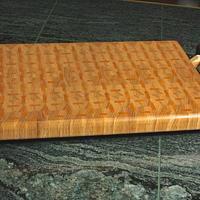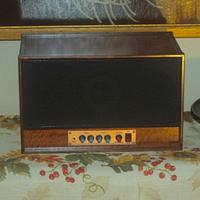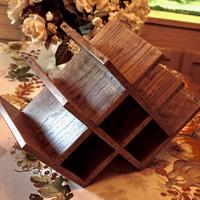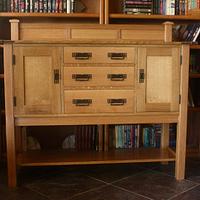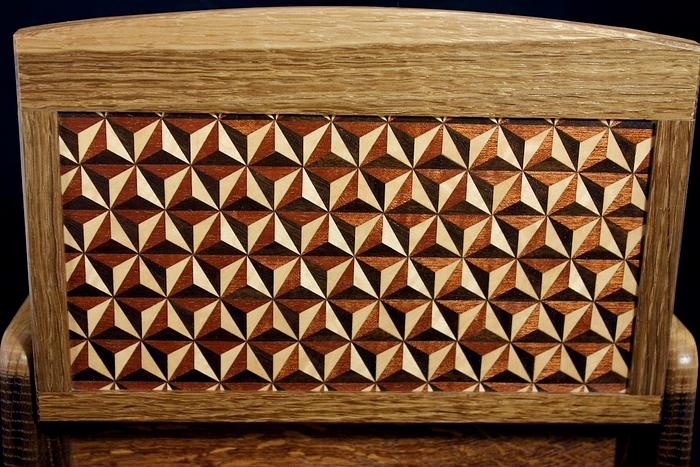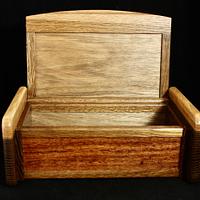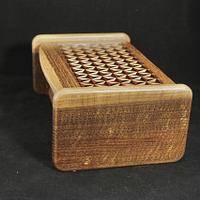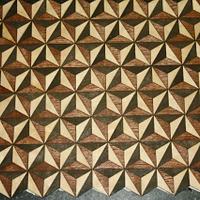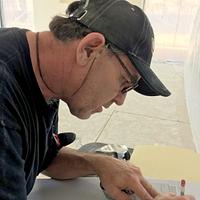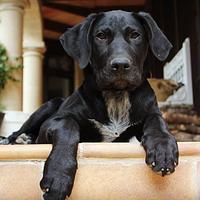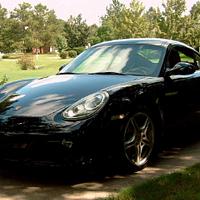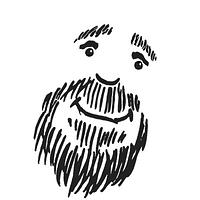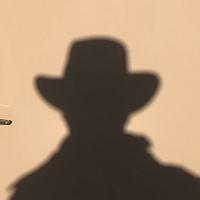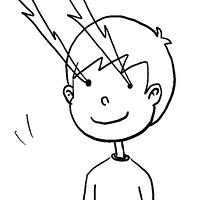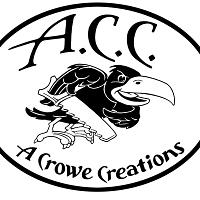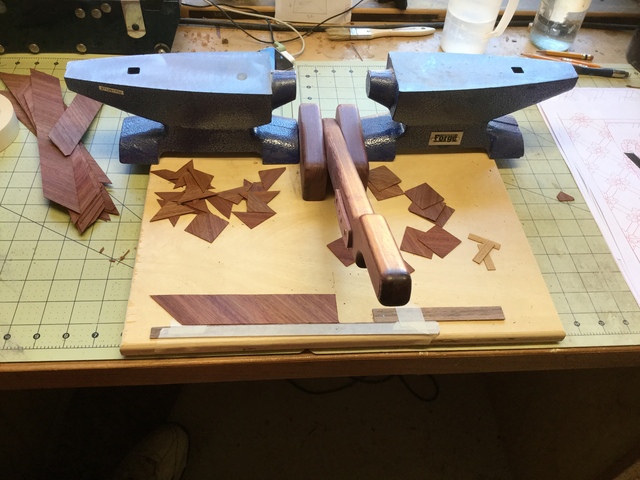
SplinterGroup
in about 3 years
More from SplinterGroup
OpArt Lidded Box
This was the by-product of making a parquetry panel, taking the wife's laser for another test drive.
I cut a bunch of these wedges from mahogany, maple, and some fumed etimoe veneers I had. They are about 1" at the widest.
Sooo much more accurate to cut these parts out with the laser then trying this by hand. In fact, I would never have done this panel if not for the laser. I'm too much of a slacker.
Pieced together on a strip of adhesive shelf paper, sticky side up and taped to my small granite surface plate.
A straight edge helped keep me true, but still went a little nuts arranging all these bits. Still takes several hours to assemble this 8"x5" field.
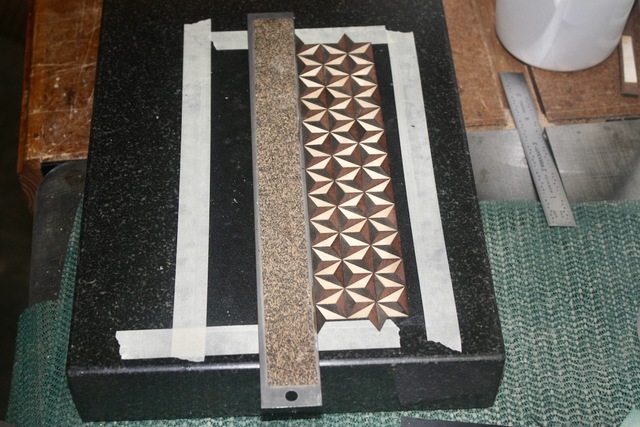
Last picture in the intro shows the assembly as one side of a veneered panel. No idea what kind of wood I used for the other side.
Now for making something that can incorporate this panel.
Simple box, made from fumed white oak cutoffs. Some sap wood, but I'm ok with that.
Two 1/2" thick QSWO end caps, WO inner box side caps, bottom (center), and long rails.
The two narrow panels between the rails and bottom are 1/4" plywood with the same mystery veneer on the inside (shown) and some oddly colored QSWO veneer on the outside.
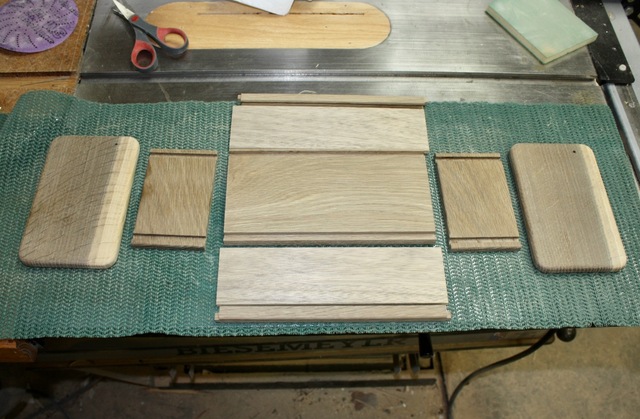
The end panels are just rectangles but I did radius the corners using a pattern bit and these handy masonite templates I batched out, DS taped to the board.
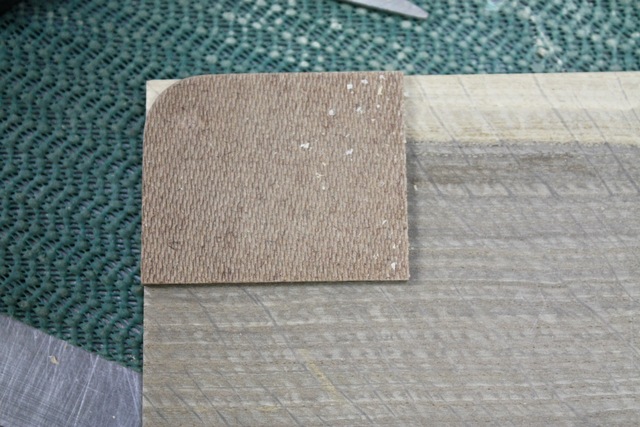
Once all cuts and sanding was finished, into the tub with some 10% ammonia for about 4 hours.
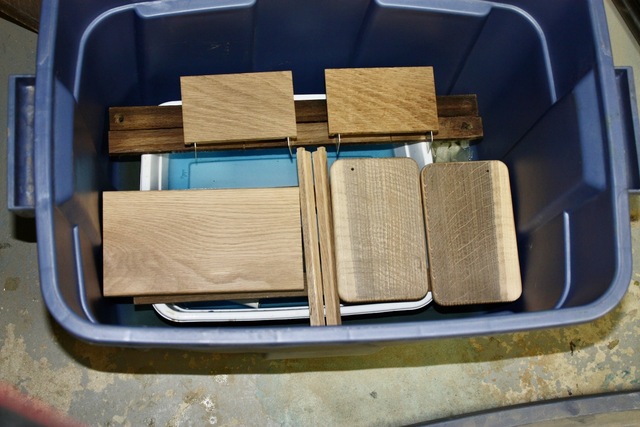
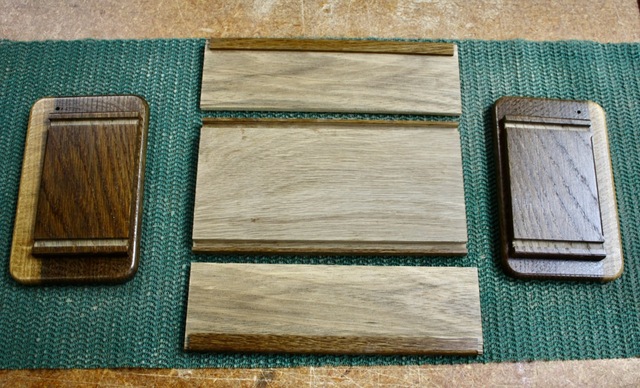
You can see how dark the end caps of the box portion got.
Bottom has old comfy chair leather 3M77'd in place.
Lid pivots on 1/8" brass stock, the lid has a "fat" back rail that acts as a stop.
Back view:
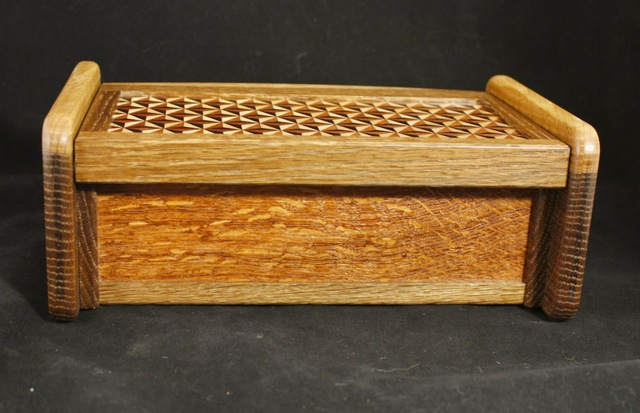
Slap on some oil and satin poly, call it another piece of experiment wood off the shelf and out the door.
Front view:
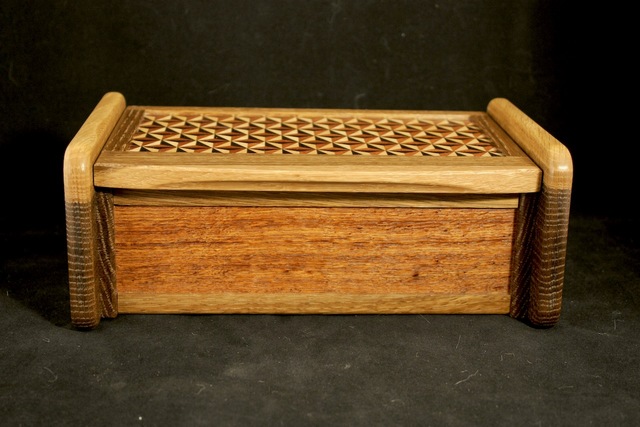
Thanks for dropping in!
32 Comments
Main Street to the Mountains
I was going to try and cut these, but I don't think I could get them accurate enough. I need your laser.....
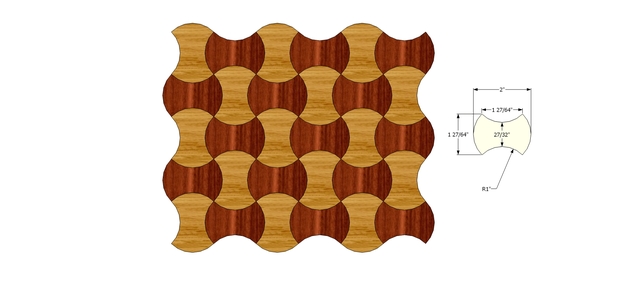
Figuring out how to do something you have never done is what makes a good challenge.
The parquetry came out very nicely.
The early bird gets the worm but its the second mouse that gets the cheese.
No Bees. No Honey. Bees Lives Matter
I'd never try this free hand and at times it is still a struggle. You are a robo-artist Paul! 😬
Bently,
Yeah, I'd never think that would be possible without Paul or some way to machine cut the curves.
It's just some overlapping circles, quick to CAD draw out or use the Laserburn software tools.
Of course the laser does burn the edges, but not the surfaces. If the fit is good the line between the parts is hidden.
I do use a wipe-over with some clear filler (Aqua-Coat) to get a smooth surface in cross light.
The panel is assembled, veneered, then sanded flat up to 300 P(the veneers are always slightly different thickness).
It could be done on thicker woods but I haven't explored beyond my comfort zone yet.
*TONY ** Denver * ALWAYS REMEMBER TO HAVE FUN
The Other Steven
The shelf paper allows me to stick it down and it stays, but I can pull it off to reposition if needed. Without the shelf liner. fuggetaboutit!
Si on the fuming. Woods need tannin and you can see the sap wood (no tannin) doesn't really change at all. Tricky stuff to get the same tint on all parts, darn near impossible if from different boards/tree as these parts are.
White oak, if it has the bronze color, turns a great chocolate brown. Other woods can get grayish or greenish but I will only do it with WO. Many of the veneers I have are factory fumed, The etimoe is nearly black.
Next time I think I'll make up more basket weave panels with the zebra wood so I can make a
The grain gives a "curvy/twisted" look even though it is all linear layout.
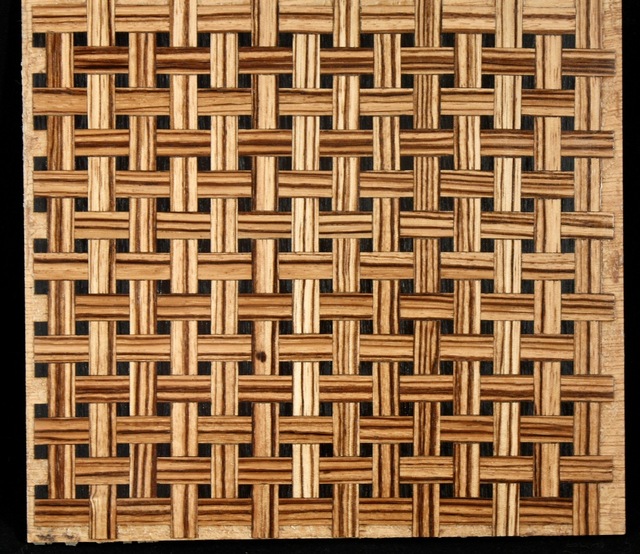
working with my hands is a joy,it gives me a sense of fulfillment,somthing so many seek and so few find.-SAM MALOOF.
I'm going to have to look into the ammonia fuming a little further. I like the idea of using old style methods like fuming or ebonizing rather than just applying a stain.
I always hated darker stain on oak/ash, never seems to get into the deep grain lines and pores. Then there is the "enhancement" where the larger grain areas get more "contrasty". In my opinion, I like oak grain, just not the contrast so I try to keep the tone even.
The one neat thing I find useful about fuming is that it penetraits deep. This allows for sanding and some after work to balance the color. The best thing for me is it is a cheap way to really "stain" white oak. I've got another DVD cabinet project in recycled red oak for the same client and they want something darker. The previous version I toned the lacquer with TransTint. This time I might go ahead and try the dye directly, but at $20/bottle it eats up the profits fast.
Ron
.................. John D....................
I started (two or three times) on a tiled pattern, similar to Bentley’s, but with straight edges. Basically took a 2x2 and planed and sawed it down to get the bow tie shape which would fit with itself rotated 90 degrees to fill a plane. Then sliced that into little pieces and tried a few different approaches to gluing them together to make a pretty patterned board. One of these days I’ll figure out a way to get the fit better so I won’t start gluing them up and then discover I’m off by a 16th (or more!) from one end of a row to the other.
May you have the day you deserve!
No name noobie here
YRTi, thanks!
I never met Asanoha - Yosegi, but hopefully he recovers from the malady. Is it just his face or all over? 8^)
I'll have to duckduckgo him to see what other stuff he does.
Life’s Good, Enjoy Each New Day’s Blessings
No name noobie here
YRTi, yes a joke, just had a laugh when I read the way you phrased your comment 8^)
I looked him up and aside from my details at about 10x magnification over what he uses, I think he has me at a disadvantage 8^)
That guy has patience and skill!
If you did want to make those parts “analog”, you could use one of these.
The early bird gets the worm but its the second mouse that gets the cheese.









